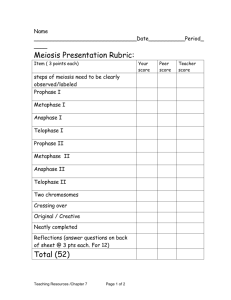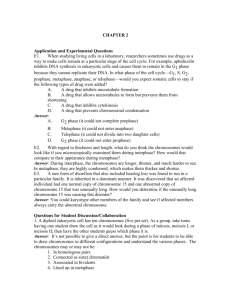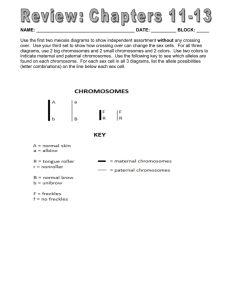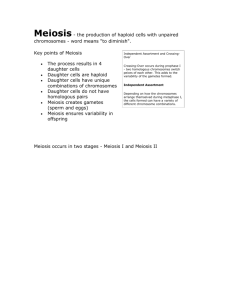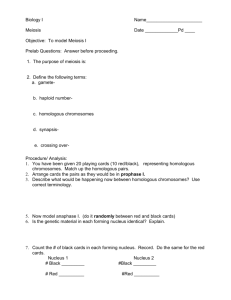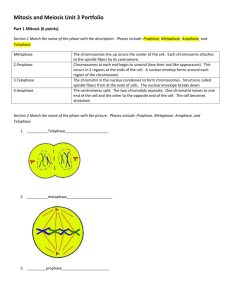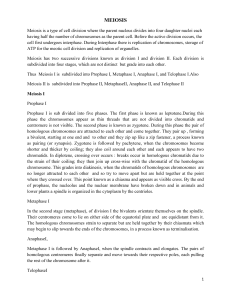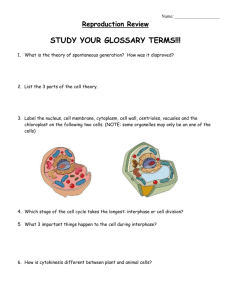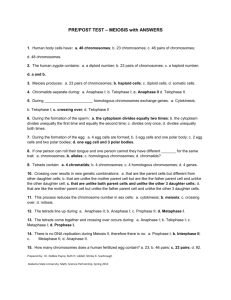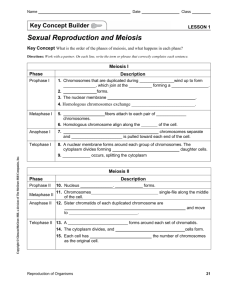Text alternative
advertisement
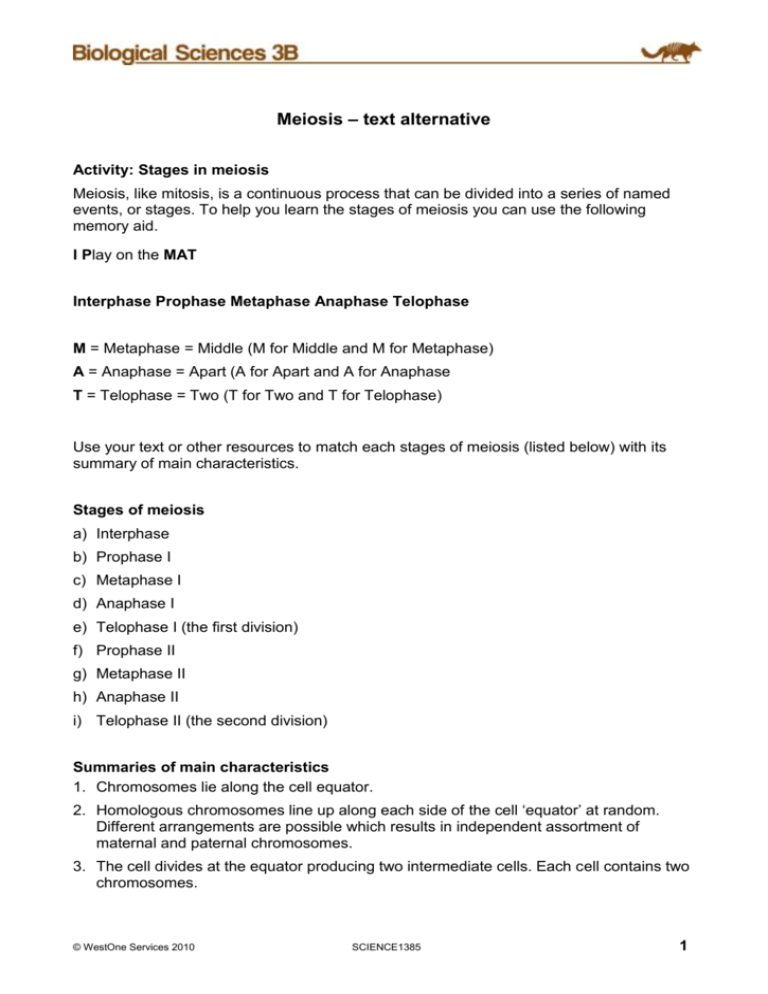
Meiosis – text alternative Activity: Stages in meiosis Meiosis, like mitosis, is a continuous process that can be divided into a series of named events, or stages. To help you learn the stages of meiosis you can use the following memory aid. I Play on the MAT Interphase Prophase Metaphase Anaphase Telophase M = Metaphase = Middle (M for Middle and M for Metaphase) A = Anaphase = Apart (A for Apart and A for Anaphase T = Telophase = Two (T for Two and T for Telophase) Use your text or other resources to match each stages of meiosis (listed below) with its summary of main characteristics. Stages of meiosis a) Interphase b) Prophase I c) Metaphase I d) Anaphase I e) Telophase I (the first division) f) Prophase II g) Metaphase II h) Anaphase II i) Telophase II (the second division) Summaries of main characteristics 1. Chromosomes lie along the cell equator. 2. Homologous chromosomes line up along each side of the cell ‘equator’ at random. Different arrangements are possible which results in independent assortment of maternal and paternal chromosomes. 3. The cell divides at the equator producing two intermediate cells. Each cell contains two chromosomes. © WestOne Services 2010 SCIENCE1385 1 4. Contraction of the spindle fibres causes the homologous chromosomes to separate and be pulled to the opposite ends, or ‘poles’, of the cell. 5. New spindles form perpendicular to the ‘old’ spindles. 6. Beginning with one diploid parent cell containing four chromosomes. The chromosomes duplicate to produce sister chromatids. 7. The chromatids are pulled apart by contraction of the spindle fibres and migrate to opposite poles of the cells. 8. Four haploid cells (gametes) are produced. 9. The chromosomes condense and spindles form. Homologous chromosomes pair up. Segments of chromosome may be exchanged in a process called crossing over. Scroll down to check answers. © WestOne Services 2010 SCIENCE1385 2 Stages in meiosis activity answers a) 6 b) 9 c) 2 d) 4 e) 3 f) 5 g) 1 h) 7 i) 8 © WestOne Services 2010 SCIENCE1385 3
